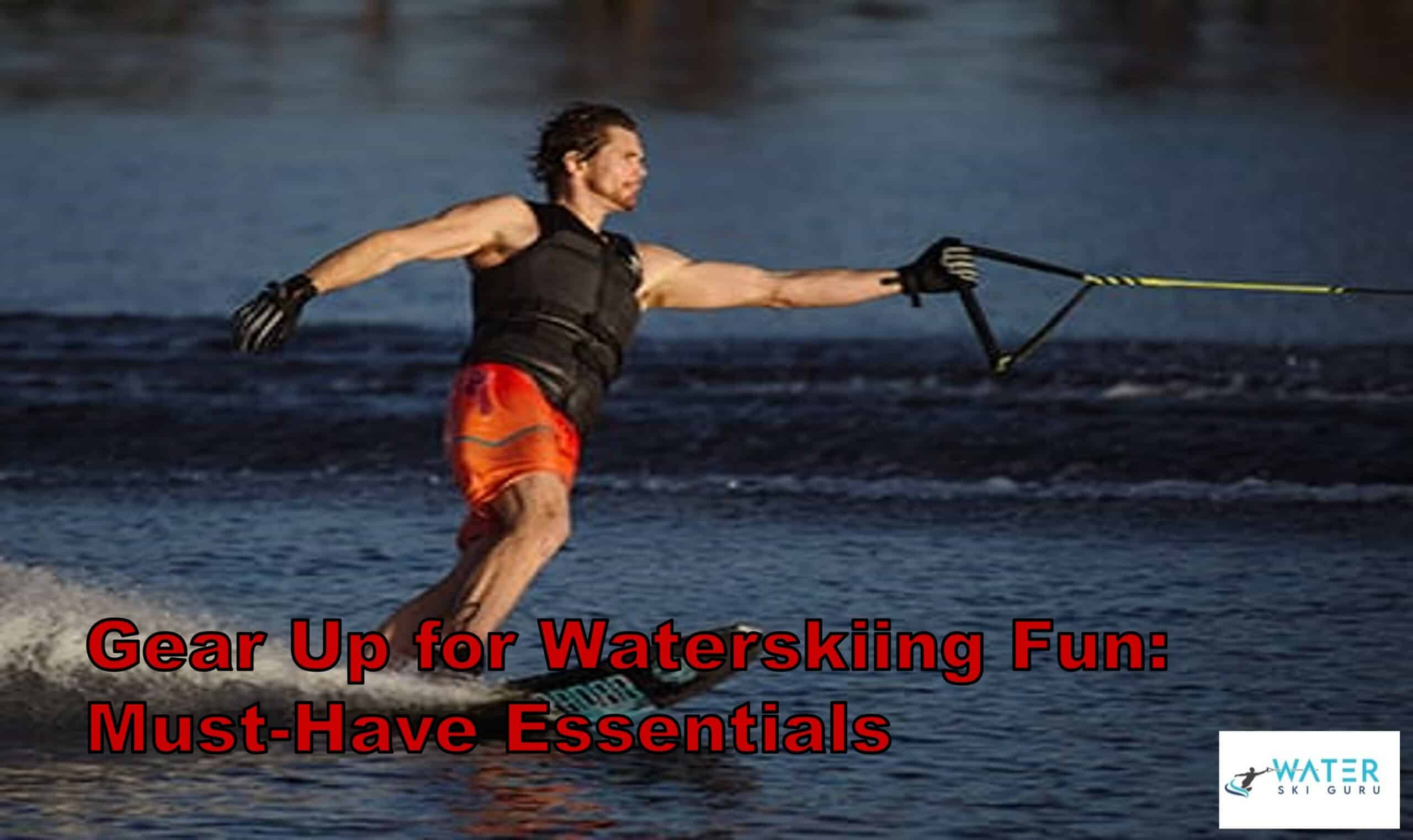Are you ready to hit the water and experience the thrill of waterskiing? Before you do, it’s important to make sure you have the right gear to ensure safety and maximize fun.
From the type of boat and ski to the rope and handle, there are essential items you’ll need to have a successful waterskiing experience.
In this comprehensive guide, we’ll provide all the must-have essentials for waterskiing, whether you’re a beginner or an experienced skier. We’ll discuss the importance of properly fitted gear, including a life jacket and gloves, and offer tips on how to maintain a positive attitude for a successful day on the water.
So, let’s gear up and get ready for waterskiing fun!
Boat and Ski Equipment
You’ll need a boat capable of pulling you up and out of the water and the appropriate type of ski for your skill level to have a successful waterskiing experience.
When it comes to boats, a pontoon boat, fishing boat, or jet ski can all be used for waterskiing. However, it’s important to choose a boat with enough horsepower to pull the skier out of the water.
Different types of skis are available for different skill levels. Combo skis or the HO Hovercraft are good options for beginners, as they’re wider and more stable. More experienced skiers may prefer slalom skis, which are narrower and have a single fin for greater control.
It’s important to choose the right ski for your skill level to ensure a fun and safe experience.
Safety Gear
To ensure your safety while enjoying the thrill of waterskiing, it’s crucial to wear a properly fitted life jacket at all times. Not only is it required by law in most places, but it can also make a big difference in case of an accident. Here are some tips for choosing the right life jacket:
- Look for a jacket that fits snugly but comfortably, without any gaps or looseness.
- Check the buoyancy rating to make sure it’s appropriate for your weight and activity level.
- Choose a bright color or one with reflective strips to improve visibility.
- Make sure the jacket is approved by the United States Coast Guard (USCG).
In addition to wearing a life jacket, it’s important to take precautions to prevent common injuries in waterskiing. Some common injuries include sprains, strains, and bruises. To prevent these injuries, make sure to warm up before skiing and stretch your muscles.
If you do get injured, remember to rest, ice the affected area, and seek medical attention if necessary. By following these tips and recommendations, you can enjoy the thrill of waterskiing safely and confidently.
Accessories and Extras
Accessories and extras can enhance your waterskiing experience, such as gloves to protect your hands and a ski bag to transport your equipment. When it comes to gloves, they can help to relieve hand pain and offer better grip on the rope handle. Gloves are especially useful for skiers who are new to the sport and may not have developed calluses on their hands yet. There are a variety of gloves available at different price points, from basic neoprene gloves to more advanced options with extra padding and reinforced fingers.
Choosing the right rope and handle is also important for a successful waterskiing experience. A waterski specific rope and handle will offer better quality and longevity. It’s important to look for a rope that is at least 70 feet long with a handle that is comfortable to hold and has a good grip. Waterski ropes also come in different shapes and sizes, depending on the type of skiing and skill level of the skier. Make sure to choose a rope and handle that is appropriate for your needs and skill level to ensure a safe and enjoyable experience on the water.
| Item | Purpose |
| Ski Bag | Transport waterski equipment |
| Neoprene Gloves | Basic gloves to protect hands |
| Padded Gloves | Advanced gloves with extra padding |
| Waterski Rope and Handle | Essential for pulling skier out of the water |
With the right accessories and extras, you can enhance your waterskiing experience and make it more enjoyable. Whether it’s gloves to protect your hands or a ski bag to transport your equipment, these items can make a big difference in your overall comfort and safety on the water. So, take the time to choose the right gear for your needs and skill level to ensure a successful and enjoyable experience every time you hit the water.
Frequently Asked Questions
What are some common mistakes beginners make when learning to waterski?
Common mistakes beginners make when learning to waterski include not keeping their knees bent, not allowing the boat to do the work, and not starting with combo skis. Tips for improvement include practicing body positioning, starting with proper equipment, and having patience.
Are there any specific hand signals that should be used when communicating with the boat driver while waterskiing?
Hand signal etiquette and boat communication protocol are crucial for safe and successful waterskiing. Use clear signals for speed, direction, and stopping. Keep your hand signals simple and consistent to avoid confusion and accidents.
What should be done to properly maintain and care for waterski equipment?
To keep your waterski equipment in top shape, it’s important to perform regular maintenance and use proper storage techniques. Clean skis and rope after each use, store in a dry place, and check bindings and ropes for wear.
Can different types of water conditions affect the experience of waterskiing?
Different water conditions can greatly affect your waterskiing experience. Wind, waves, and currents can make it more challenging. Proper safety gear, such as a well-fitted life jacket, is essential in any condition.
Are there any recommended exercises or stretches to do before and after waterskiing to prevent injury?
Gear up for injury-free waterskiing! Warm up with foam rolling and dynamic stretching. Stay hydrated and properly nourished before and after skiing. Prevent injury and improve performance with these simple yet effective exercises and tips.
Conclusion
Congratulations, you’re now fully equipped with all the must-have essentials for a thrilling waterskiing experience!
By now, you know that having the right boat, ski, rope, and handle are essential for maximum enjoyment and safety while skiing on the water. And don’t forget the importance of wearing a properly fitted life jacket and gloves to protect yourself from potential injuries.
But let’s not forget the importance of having a positive attitude when it comes to waterskiing. As the saying goes, “attitude is everything.”Having a positive mindset can make a huge difference in your overall experience. It can help you overcome any obstacles and learn from mistakes, leading to a more successful and enjoyable time on the water.
So, gear up and hit the water with confidence, knowing that you have all the necessary equipment and knowledge to make the most out of your waterskiing adventure. Remember to stay safe, have fun, and always maintain a positive attitude!

